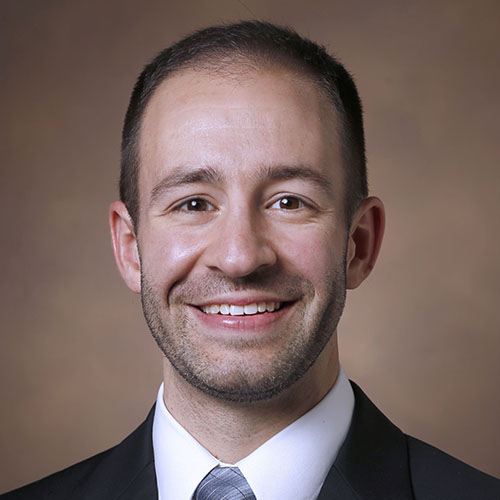Neurosurgeons at Vanderbilt University Medical Center are finding benefits of their new exoscope extend far beyond improved surgical accuracy. The 3D views reduce surgeon fatigue and provide a more comprehensive picture of the brain for the entire operating team.
Exoscopes offer dramatically improved visualization over traditional operating microscopes. Over the past several years the technology has become a mainstay for precision surgery, said Peter Morone, M.D., a neurosurgeon at Vanderbilt.
“The exoscope allows you to be safer and more efficient as a surgeon,” he said. “We’re using it for brain tumors, vascular neurosurgery and even some spine surgeries.”
“The exoscope allows you to be safer and more efficient as a surgeon.”
Improved Visuals
For precision procedures such as brain tumor resections, the latest exoscopes serve as moveable, telescoping microscopes that can more readily assume different positions over the course of a surgery. A surgeon can use controls on the exoscope to manipulate its position and generate a flexible, 3D picture with far greater detail, says Morone.
“It allows you to look at different angles in the brain that you wouldn’t be able to look at with the microscope. It allows you to see a more expansive view,” he added.
Support for Surgical Teams
The Olympus exoscope used at Vanderbilt also minimizes the need to look through an eyepiece, instead leveraging a high-resolution camera connected to a large, 55-inch screen.
“Everyone in the OR is standing side-by-side looking at the exact same thing,” Morone explained. “It’s tremendously beneficial for a teaching institution.”
The setup also aids efficiency. “If there’s bleeding, the anesthesiologist can see exactly where and what I’m talking about. Surgical assistants know exactly what instrument is needed. Circulating nurses, scrub assistants, fellows, everyone can see what is going on the whole time.”
“Everyone in the OR is standing side-by-side looking at the exact same thing.”
The exoscope’s “heads up” approach is also more ergonomic. Multiple surgeons can operate without having to remain bent over peering into a microscope. “With the exoscope you can stand straight up. It’s comfortable,” Morone said.
Expanding Technology
Morone notes one limitation of the exoscope is that, in some scenarios, it may not offer depth perception as strong as a microscope.
Current exoscopes also rely on simple, manual controls. He says a joystick is in the works for better control and optics. “Some kind of steerable exoscope with a voice command would be ideal.”
The Vanderbilt Institute for Surgery and Engineering is working to develop new ways to improve steering, dexterity and imaging for precision surgeries. Morone envisions exoscopes integrating with similar kinds of improved robotic instrumentation down the line.




